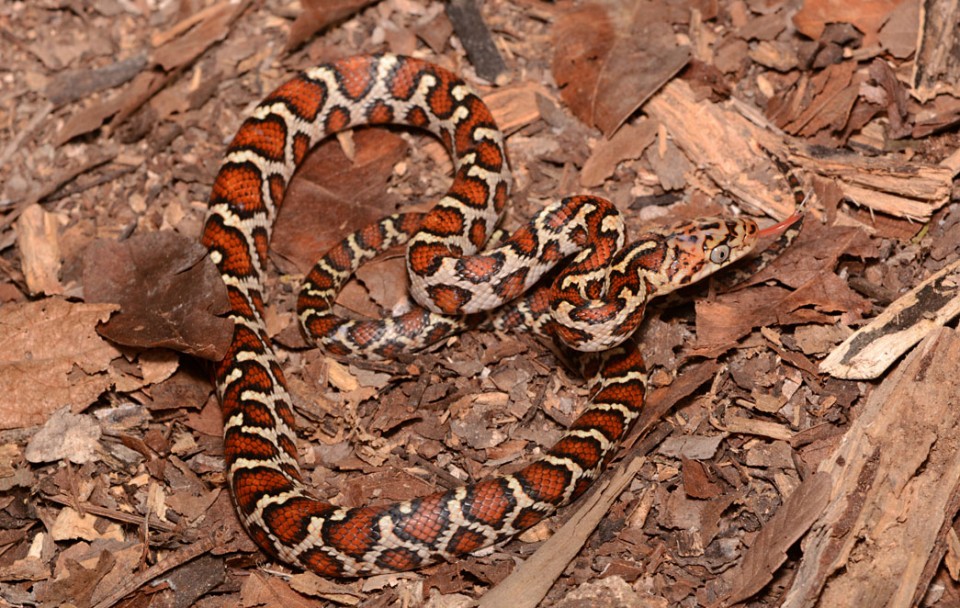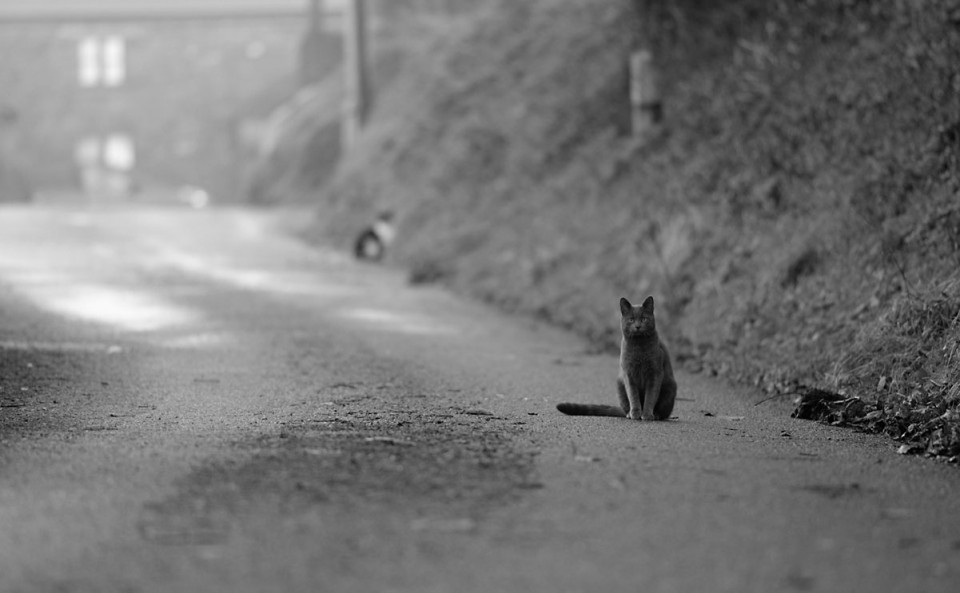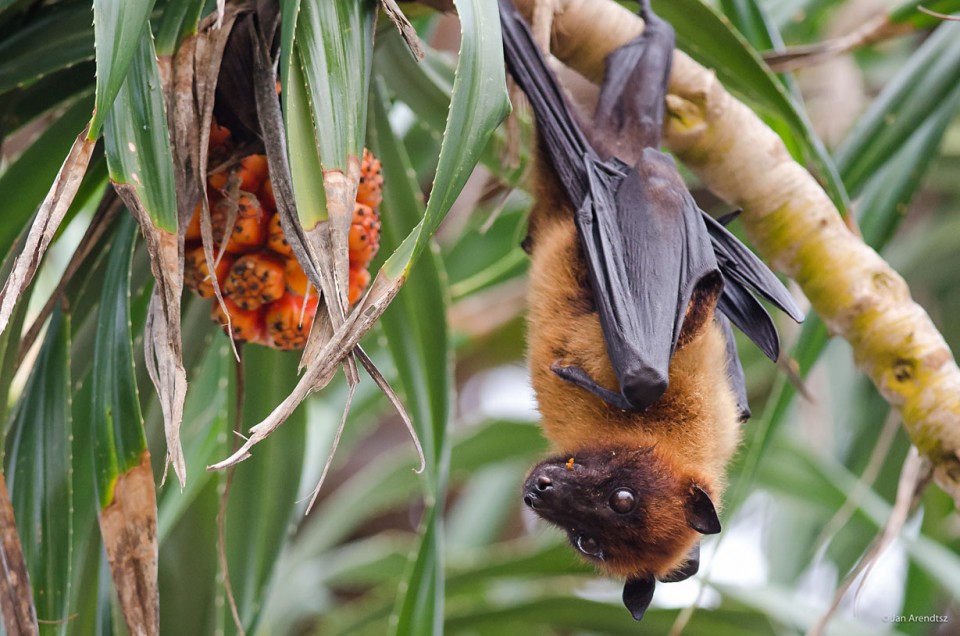Bats - Predation & Longevity
Predators
There are very few animals that feed exclusively on bats. The bat falcon (Falco rufigularis) of the Americas and the bat hawk (Machaeramphus alcinus) of Africa and New Guinea appear to be the exceptions to this generalization – although the bat falcon will take non-chiropteran prey, the bat hawk appears to feed only on bats. In South America some bats will eat other bats; the spectral bat (Vampyrum spectrum) being perhaps the best-known example. In North America, raccoons (Procyon lotor) and foxes (Vulpes sp.) are known to eat bats. Similarly, great horned owls (Bubo virginianus) of in the Americas will take bats, as will other raptors -- such as the red-tailed hawk (Buteo jamaicensis), Swainson’s hawk (Buteo swainsoni) and merlin (Falco columbarius) -- opossums (Didelphis virginiana), snakes and wood mice (Apodemus silvaticus).

Snakes are well-known to take bats, even catching them while in flight. Some of the most striking footage of this behaviour appeared on the BBC’s first Planet Earth series in 2009 and captured yellow-red rat snakes (Pseudelaphe flavirufa) in Australia’s Bat Cleft cave catching bats in flight in pitch darkness.
Here in the UK, there are no predators that take exclusively bats. Owls are probably the greatest natural predators of bats in Britain. The UK is home to six native species of owl and, of these, the tawny (Strix aluco) and barn owls (Tyto alba) are the most significant predators (tawnies owls taking more bats than barn owls). Other British birds that may take the occasional bat include the kestrel (Falco tinnunuculus), peregrine (F. peregrinus), hobby (F. subbuteo), sparrowhawk (Accipiter nisus) and goshawk (A. gentilis), black-headed gulls (Larus ridibundus), herring gull (L. argentatus), rook (Corvus frugilegus) and the carrion crow (C. corone). Weasels (Mustela nivalis) and stoats (M. erminea) are known to take grounded or low roosting bats, and it is possible that foxes (Vulpes vulpes) will take grounded bats, although all accounts I have come across whilst researching this article were anecdotal. It is also possible that snakes take bats in this country
Britain has three native snake species, and one that escaped from a zoo in North Wales during the 1980s (the Aesculapian snake, Elapha longissimi). The adder (Vipera berus), grass snake (Natrix natrix) and smooth snake (Coronella austriaca) are all large enough to take a bat, as is the Aesculapian snake, although I’m unaware of any such reports making into the scientific literature.

In addition to the above, domestic cats (Felis catus) are, worldwide, considered a significant predator of bats. It’s difficult to put a figure on how significant cats are in terms of bat predation, not least because owners don’t see a lot of what their pet catches, but the data we have suggests it may vary geographically. In their fascinating, if somewhat lachrymose, 2003 paper for Mammal Review, for example, Michael Woods of the Mammal Society, Robbie McDonald at the Game Conservancy Trust and Stephen Harris at Bristol University, looked at the predation of wildlife by domestic cats in Great Britain. The researchers found that of 9,852 small mammals brought home by 986 cats in 816 households over six months in 1997, 22 (0.2%) were bats. A study by Leonardo Ancillotto and colleagues, published in Mammalian Biology during 2013, looking at species brought into just over a thousand rescue centres in Italy between 2009 and 2011, by contrast, found cats accounted for almost 30% of adult bats received.
In his book, Bats, Phil Richardson notes that “the cat is the only mammal likely to be found on rooftops with sufficient skill to snatch a bat out of the air as it flies past” and the Bat Conservation Trust UK state, on their helpline website, that:
“Bats do have other natural predators (such as birds of prey) but cats, particularly, will learn the location of the bat roost and catch bats as they emerge.”
Longevity
It is difficult to obtain lifespan data for wild animals, particularly elusive, nocturnal ones. Nonetheless, tagging studies and the rearing of bats in captivity have revealed some species can live in excess of 20 years and a little brown bat (Myotis lucifungus) in Canada was tagged as a juvenile and recaptured 30 years later. In his fascinating 1985 book, Bats, science teacher and Bat Conservation Trust chairman Phil Richardson gives maximum ages for the greater horseshoe, lesser horseshoe, mouse-eared, Daubenton’s and pipistrelle bats as 31, 18, 28, 32 and 11 years, respectively. Richardson also gives a longevity of 20 to 30 years for fruit bats. Macdonald in his New Encyclopaedia of Mammals gives the maximum age for chiropterans as 33 years, although notes that longevity “probably averages 4-5 years in many species”.
